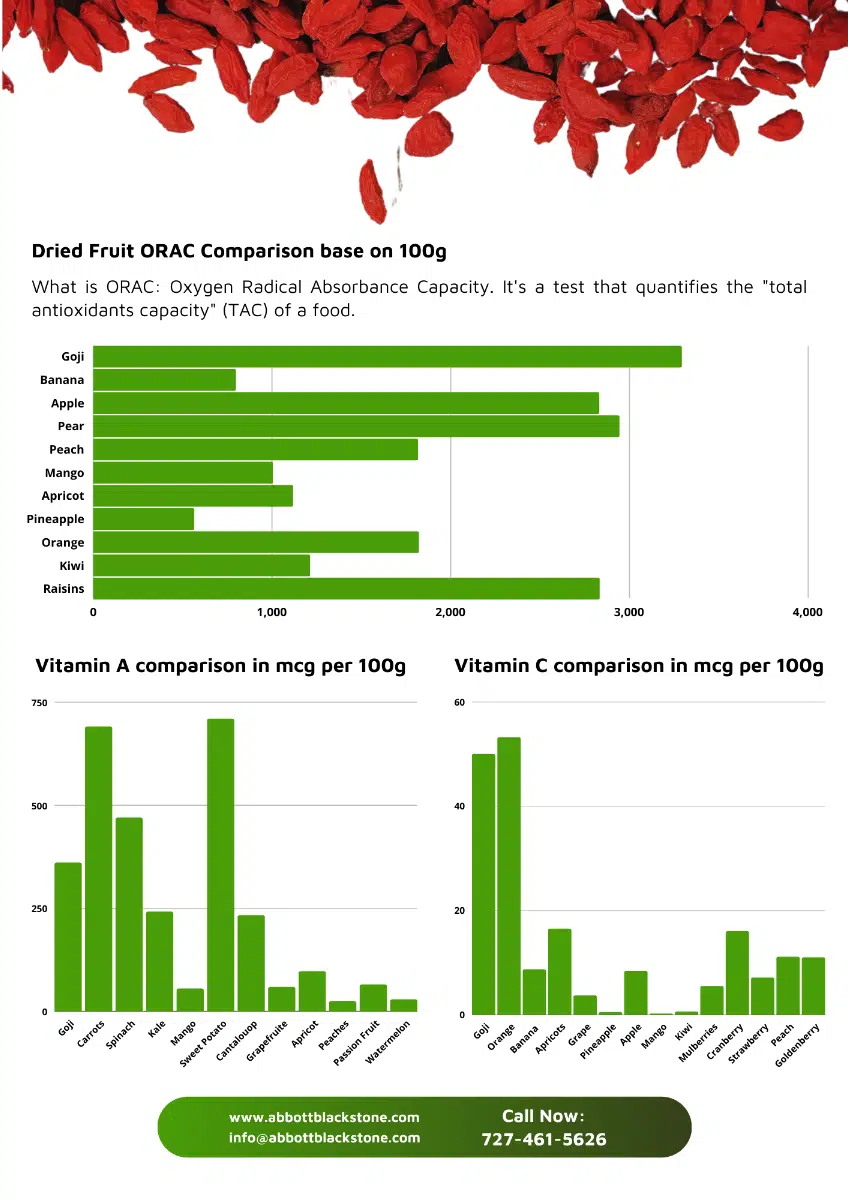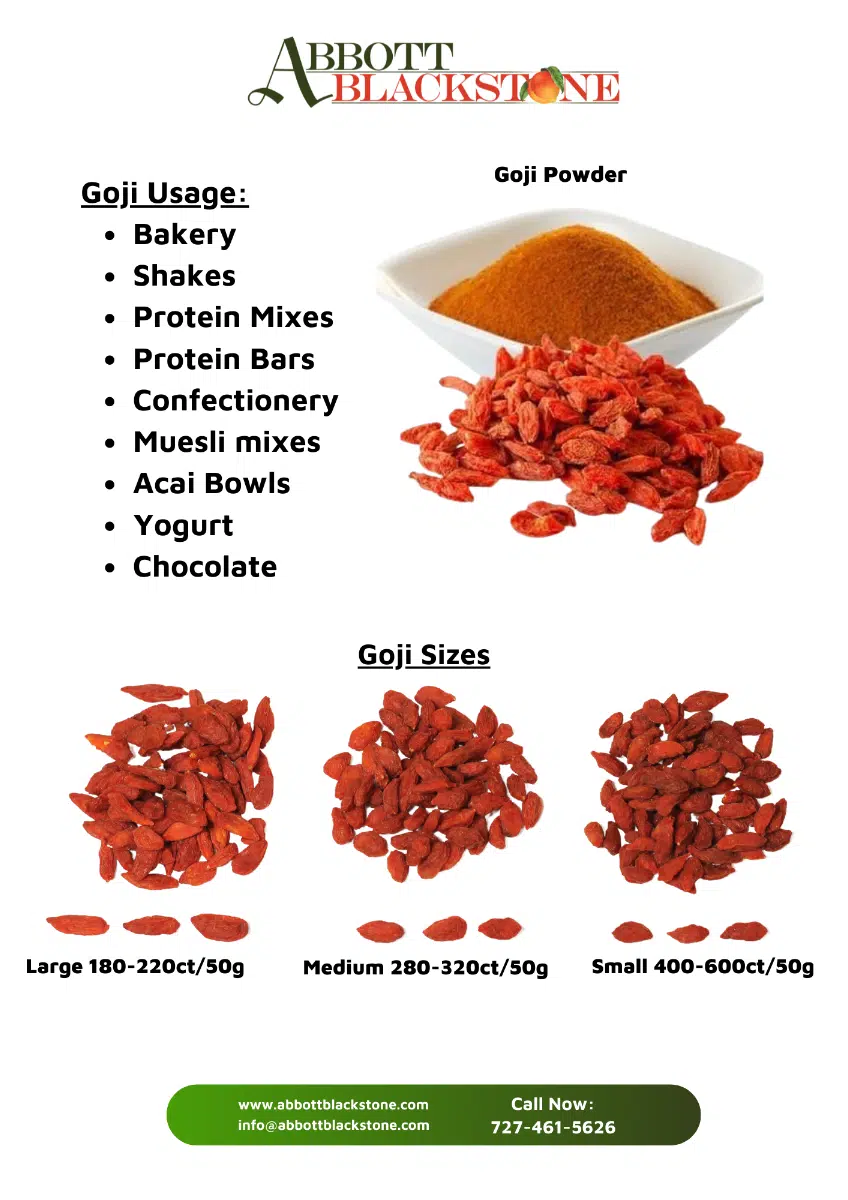Goji Information Sheet
Goji berries are native to northern China and have a long and rich history of consumption and use in traditional Chinese medicine going back more than 2000 years. The berries have increasingly gained widespread popularity outside of Asia owing to their extraordinary nutrient density and high anti-oxidant profile.
- Although natural vitamin C is very heat sensitive, dried goji has a surprisingly high Vitamin C content of 53.3mg/100g which is almost as high as a fresh orange (59.1mg/100g)! (See link)
- Vitamin A content of drief Goji is highest in the dried fruit sector and comes close to being the highest vitamin A content for all unprocessed plant-based foods – only fresh carrots and sweet potatoes have more.
- In July of 2021 the American Journal of Clinical Nutritional published results of a randomized and controlled trials conducted by the National University of Singapore found that Goji Berry consumption may lower long term Cardiovascular Disease risk. (See link)
- Another Randomized pilot trial published in December 2021 by scientist at UC Davis, examining the effect of goji berries on Age relatd macular degeneration (the third leading cause of blindness world wide). The study noted significant results for participants consuming 28g of goji berries/day. (See link)
- These academic studies establish goji as having some of the highest levels of bioactive Antioxidants in the fruit world.





